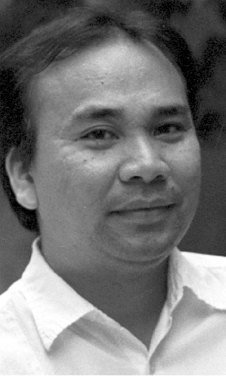
Jobers Bersales
The recent offer of the GMR-Megawide Cebu Airport Corp. (GMCAC) to submit an unsolicited bid of P200 billion for a second runway at the Mactan-Cebu International Airport brings to mind my first experience landing at what was then called the Mactan Airport.
It was the first time I ever flew on a plane, under terrifying circumstances. We flew on a SwiftAir DC-3 that somehow landed in Pagadian City in 1973 as Moro National Liberation Front (MNLF) fighters were being chased around the city, sections of which were being bombed by the Philippine Air Force.
(I shudder at the thought of the fate of Marawi City because of this Maute gang of terrorists!)
Leaving that harrowing experience behind, we landed at what was then a huge cement runway complete with a terminal built just beside a high control tower left behind by the departing United States forces as the Vietnam War started to show who was winning (the North Vietnamese communists were already at the gates of the South Vietnamese capital, Saigon, now Ho Chi Ming City).
There were no trauma experts then and we just lived out our lives in Cebu strangely with no post-traumatic stress disorder so common nowadays when there are trauma experts (!)
Unbeknownst to a lot of people, the actual attempt to move the tiny and dangerous domestic airport out of Lahug to the massive well-developed Mactan Airbase was supposed to happen nearly a decade earlier when it was scheduled to be carried out on March 14, 1966.
As history would have it, despite endorsements by both the Cebu City and Cebu provincial governments as well as the main business organizations of Cebu, the day came and went without any result.
The problem was the lack of ferryboats to bring airline passengers to Muelle Osmeña, the tiny port of the then-sleepy Opon town and thence to the lonely Mactan Airport.
It would take a year more, most specifically on April 27, 1966, with Philippine Airlines leading the way, hell-bent on moving out of the short runway of Lahug Airport for safety reasons, whether there would be passengers waiting at Mactan or not.
Fast forward to 2010 and during a brief visit in Medellin, Giles Villamor, the municipal planning and development officer there, showed me a late colonial-era house just at the corner to the Medellin Church that he had almost single-handedly turned into a makeshift museum.
On the ground floor were a host of artifacts including a collection of equipment by John Kiener, a famed diver who had called Medellin home due to some important dive spots nearby.
Among the equipment on display were surveying instruments used by his later father, Paul John Kiener, who won the contract to develop the runway and other facilities of Mactan Airbase.
I do not know if the equipment is still there, but I would recommend to GMCAC to find ways to bring them to the new Terminal 2 and build something of a memorial wall or some exhibit to the history of the airport.
The Mactan-Cebu International Airport story of course actually began in World War II, when the Japanese developed a small airstrip on Mactan to serve as an alternate airstrip as Lahug Aerodrome or Lahug Field (where IT Park and Cebu Waterfront are now located) as the Lahug Airport was known then, was filling up with Mitsubishi Zeroes and other warplanes.
When the Americans liberated Cebu, they must have used it briefly as the marines trained in Liloan for the landing in Japan — a plan quickly abandoned with the dropping of the atomic bombs at Hiroshima and Nagasaki in August 1945 and the subsequent unconditional surrender of Japan.
After the August 28, 1945 surrender of nearly 9,000 Japanese officers and soldiers in northern Cebu, Mactan airstrip served as a depository of sorts for surplus military equipment, sold by lot, perhaps including destroyed or damaged Japanese Tora-tora (tiger) airplanes. (I remember reading a news item published in the late 1940s about corruption allegations regarding the auction of the military surplus at Mactan.
The airstrip there must have served that purpose, for where else could they have stored all those equipment and supplies that would no longer be used in the planned Japanese invasion?)
Fast-forward to the 1970s and we find the inauguration of the old Mandaue-Mactan Bridge, still up and about until today, some forty years later.
That bridge, which collected a toll fee for a time, clearly speeded up the birth of the Mactan-Cebu International Airport as well as the rise of Opon into Lapu-Lapu City — and, sadly with it, this chaos of tricycles that must soon give way to a more efficient transport system, whether there is political will on the part of the politicians there or not.
I would be happy if GMCAC decides to put up a small corner in Terminal 2 to provide a sense of history to this airport.
I’m sure there are many people who used to be part of this airport who would be willing to share their objects and mementos to remind everyone really how far this airport has gone from just a small airstrip.
My hope is that even as GMCAC has created the airport into a world-class winner, Lapu-Lapu city officials will also follow suit and prepare to address problems that are now confronting Cebu City that it too will soon confront in the very near future: absence of a mass transport system, lack of potable water, informal settlers and street flooding.